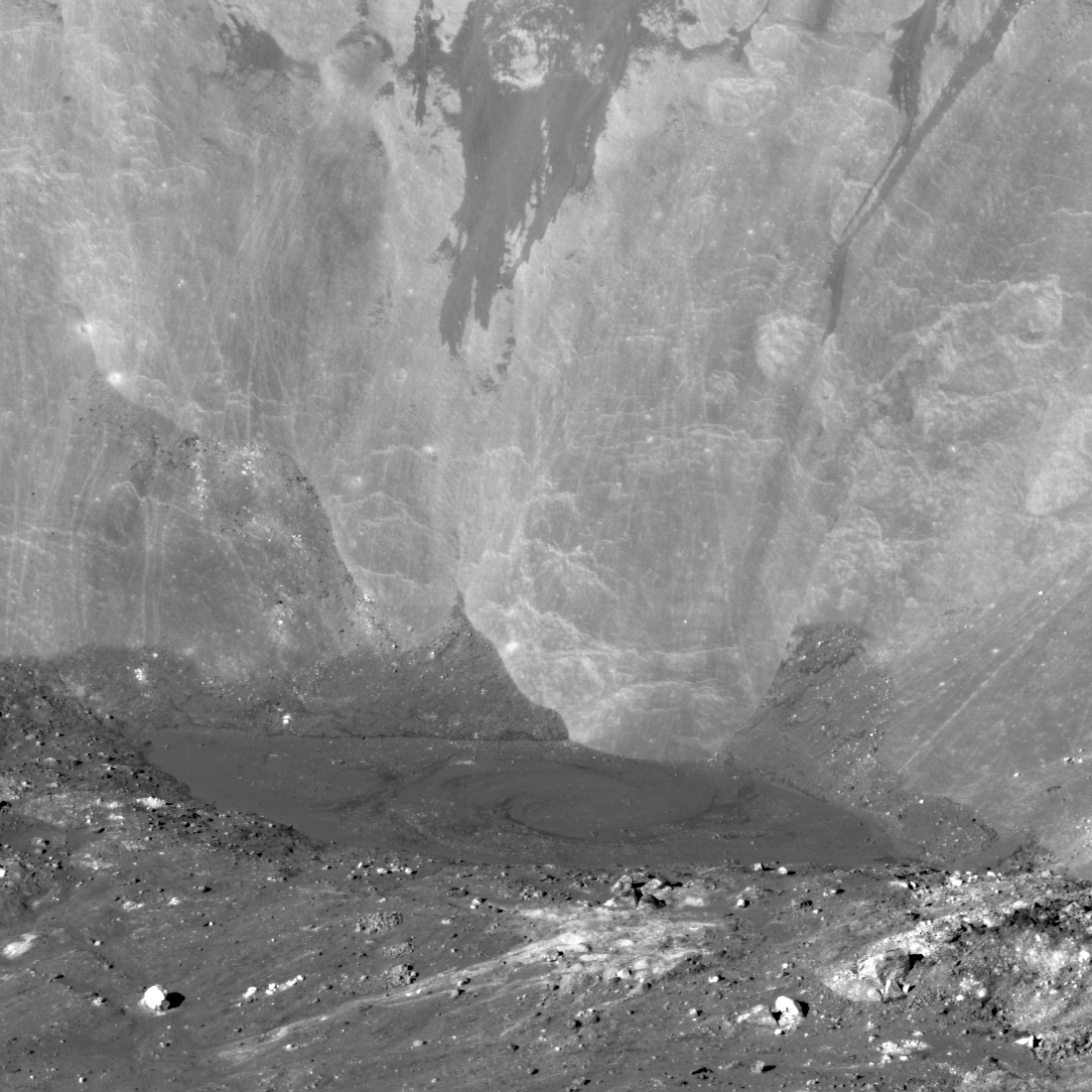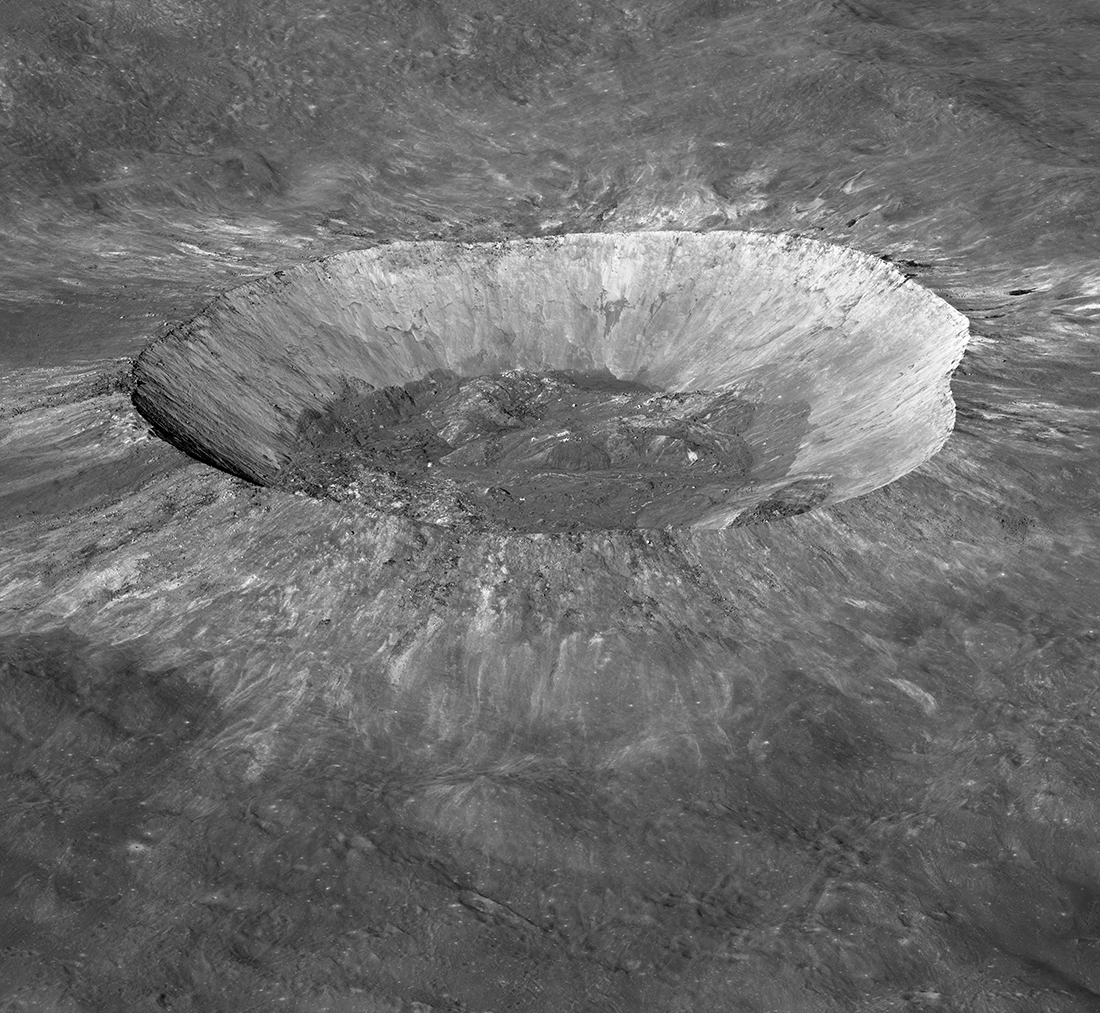
Giordano Bruno is one of the youngest large craters on the Moon (21 kilometers in diameter, 35.97°N, 102.89°E). LROC captured this fantastic oblique view of the crater from an altitude of 113 kilometers in August of 2017. The Sun was fairly high above the horizon (31°) so only the steepest slopes and boulders in the foreground cast shadows and albedo (surface brightness) contrasts are prominent.
Faster than a speeding bullet - or rather ten times faster than a speeding bullet - is a good starting point in terms of grasping the energy released in a typical impact event. That is, for a bullet approaching 2 kilometers in diameter! The pressure and heat that were released during the collision not only excavated a hole much larger than the impactor but also melted a tremendous amount the target rock. Melt was sprayed and sloshed on the forming crater walls where much of it flowed back, seeking the lowest point in the impact crater. From the LROC vantage point you can follow the path taken by impact melt as it flowed across the irregular floor, ponding in closed depressions, and some of it ultimately reaching the lowest point.

At least five landslide lobes are visible here. The middle lobe appears to have slid into the impact melt pool, perhaps causing the now frozen swirl pattern to form as the melt level was raised. Also note the faint lines on the lobes; these lines are tracks made by boulders that have tumbled down the slopes.
Related Featured Images
Giordano Bruno, The Big Picture
Very Oblique View of Giordano Bruno
Delicate Patterns in Giordano Bruno Ejecta
Impact Melt Flows on Giordano Bruno
Published by Mark Robinson on 15 July 2019